Architecture practice Bindloss Dawes has completed a five-bay garage and accompanying workshop to house a client’s collection of classic cars
Designed by Bindloss Dawes, the timber garage and workshop sit within the grounds of a grade II-listed 18th century home located on the outskirts of a Somerset village.
The structure comprises a long garage, home to a collection of classic vehicles, which intersects with a workshop appearing as two pitched volumes in an L-shaped plan.
The timber tool store and washbasin at the perimeter of the workshop overlook the gardens, with a toilet and further storage concealed by timber joinery under stairs which lead to a mezzanine study.
The spaces are top-lit by overhead glazing that runs along the apex of their angular roofs and an arrangement of sliding doors provide security, access, and climate control.
The largest opening, a seven metre entrance to the garage, features a three-bay wide, floor-to-ceiling timber screen that slides beyond the footprint of the foundations.
The design draws on neighbouring agricultural barns
An equally-vast, two-leaf sliding glass door provides a further layer of security, and stacks itself behind a two-bay wide steel security door, which mechanically peels back to sit flush along the south western wall.
The goal was to develop a flexible, long-life concept that could be used for a range of different setups at different stages of the building’s life.
The design draws on neighbouring agricultural barns, utilising their contextual appropriateness and learning from their lessons in low cost and materially efficient design.
A pragmatic palette of timber, steel and concrete allow the fleet of classic cars to become the focus.
As a project proposed to adapt over time, consideration has been given to how the building will weather; the zinc roof and its concealed gutters will dull, complementing the silver patination of the sweet chestnut cladding, and the tones of the concrete plinth.
Internally, the steel structure is expressed in an array of simple portal frames
As well as creating more depth, the open-lattice design of the cladding was chosen to help improve affordability by reducing the quantity of timber required by 30%. Internally this device creates dappled daylight during the day, which is reversed at night as the light from the inside spills out into the surrounding landscape.
Internally, the steel structure is expressed in an array of simple portal frames, with acoustic boards made of wood strands and cement lining the walls and ceilings between them.
An exposed steel structure sets out each car bay and the insitu concrete base provides an adaptable, tough floor surface.
Although thermostats are currently turned down, the building includes underfloor heating powered by an Air Source Heat Pump, as well as additional services behind the internal wall panelling for potential future conversion.
Project details
Architect Bindloss Dawes
Client Tim Swift
Design team Oliver Bindloss, George Dawes
Structural engineer Constant Structural Design
Contractor GDW Building & Renovations
Skylights Vitral
Timber cladding English Woodlands Timber
Zinc Q&M Roofing
Metalwork Metaltec
Electric doors Rundum Meir
Sliding glazing Fineline Aluminium
Acoustic panels Troldtekt


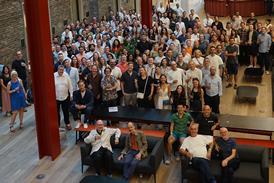
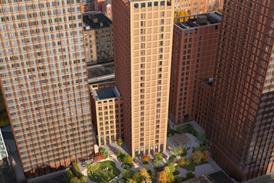
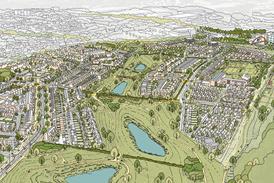
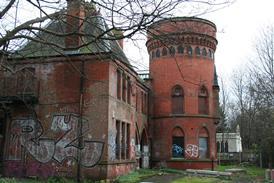



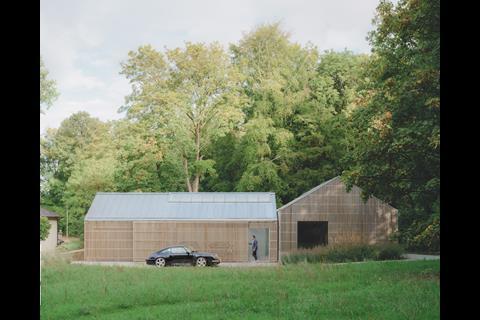
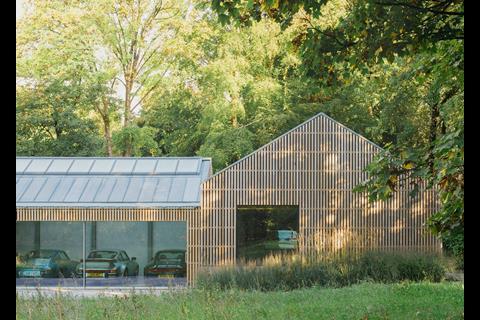
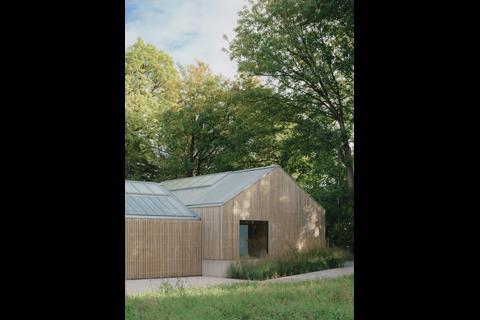
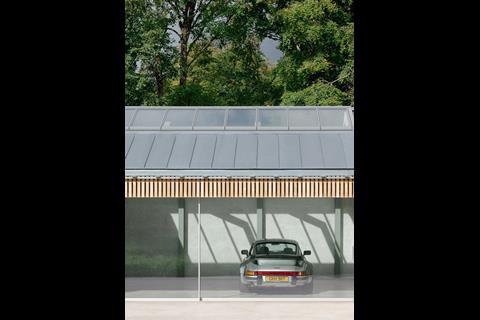
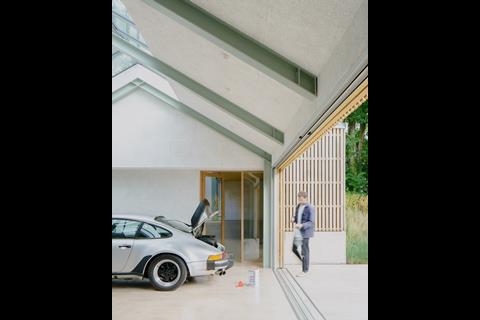
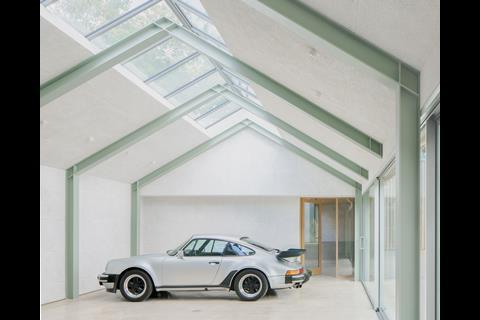
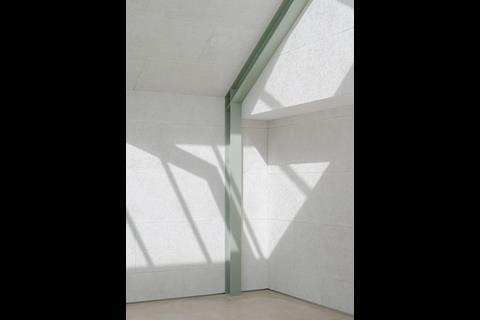
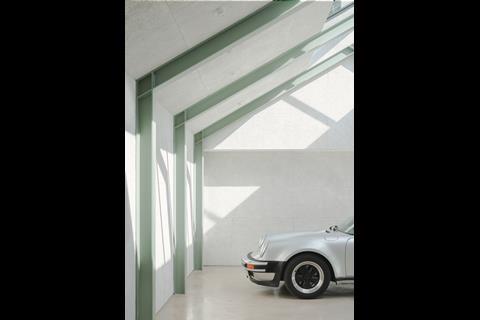

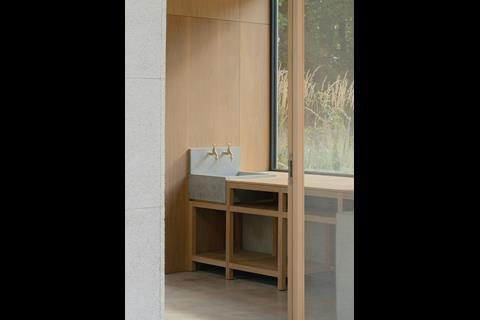










No comments yet